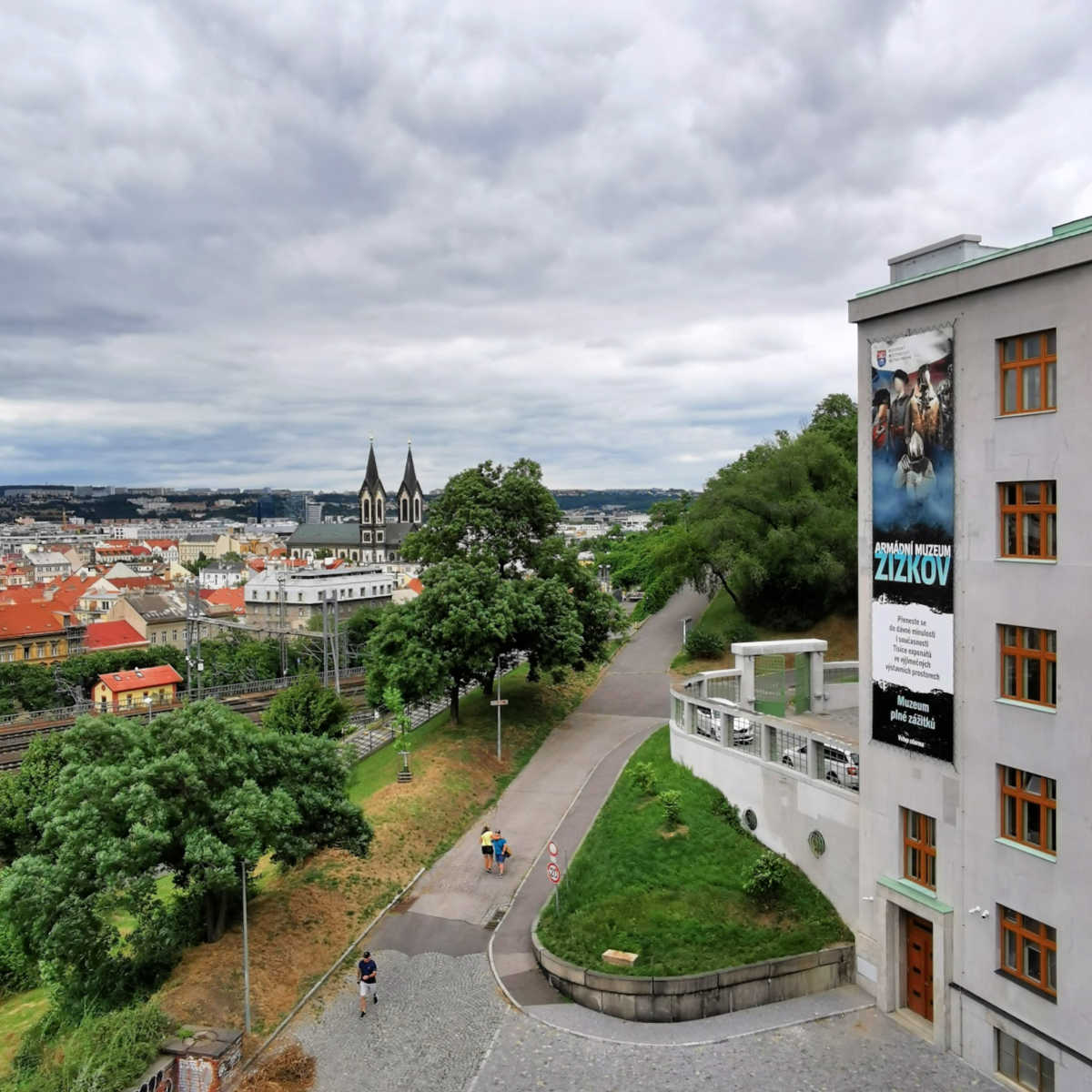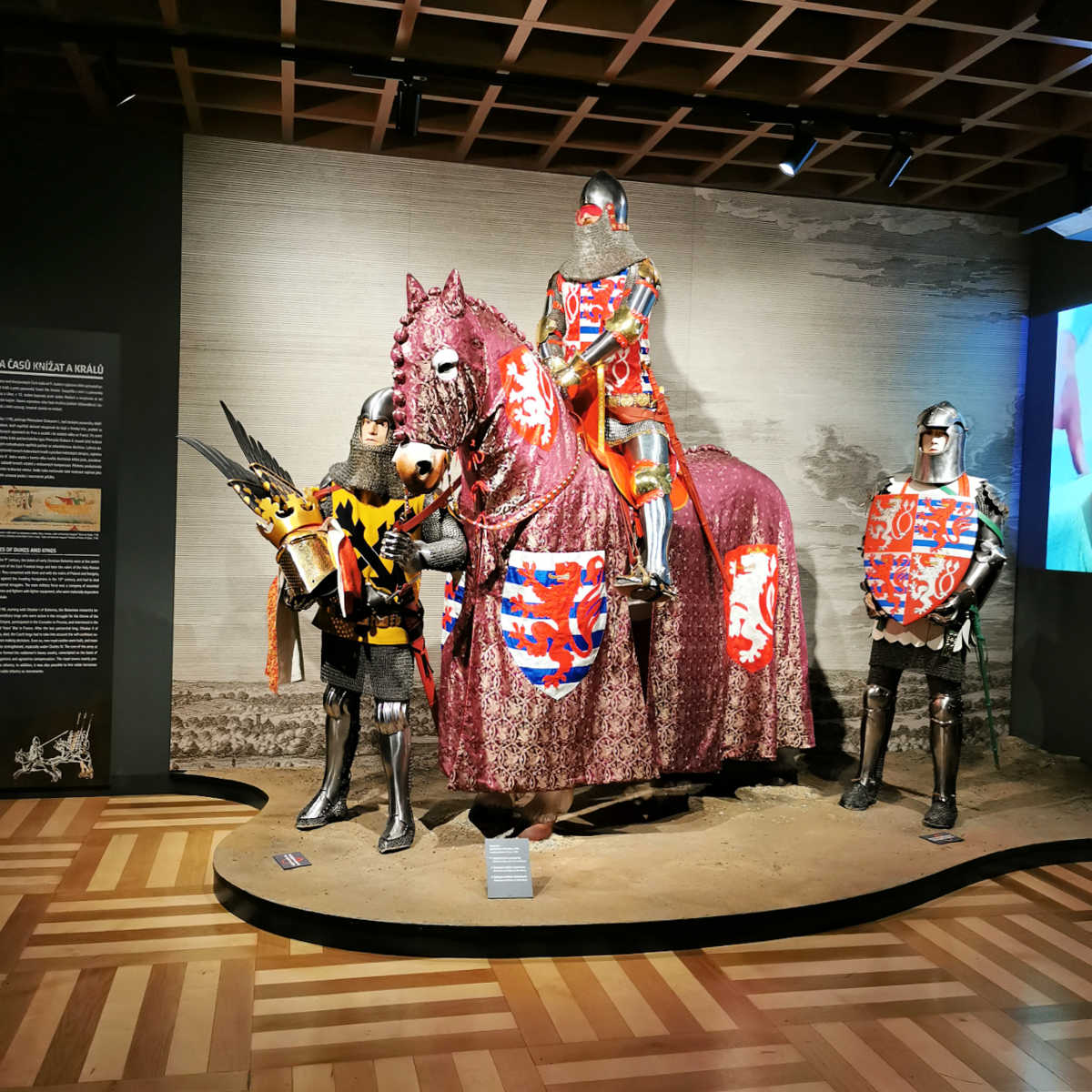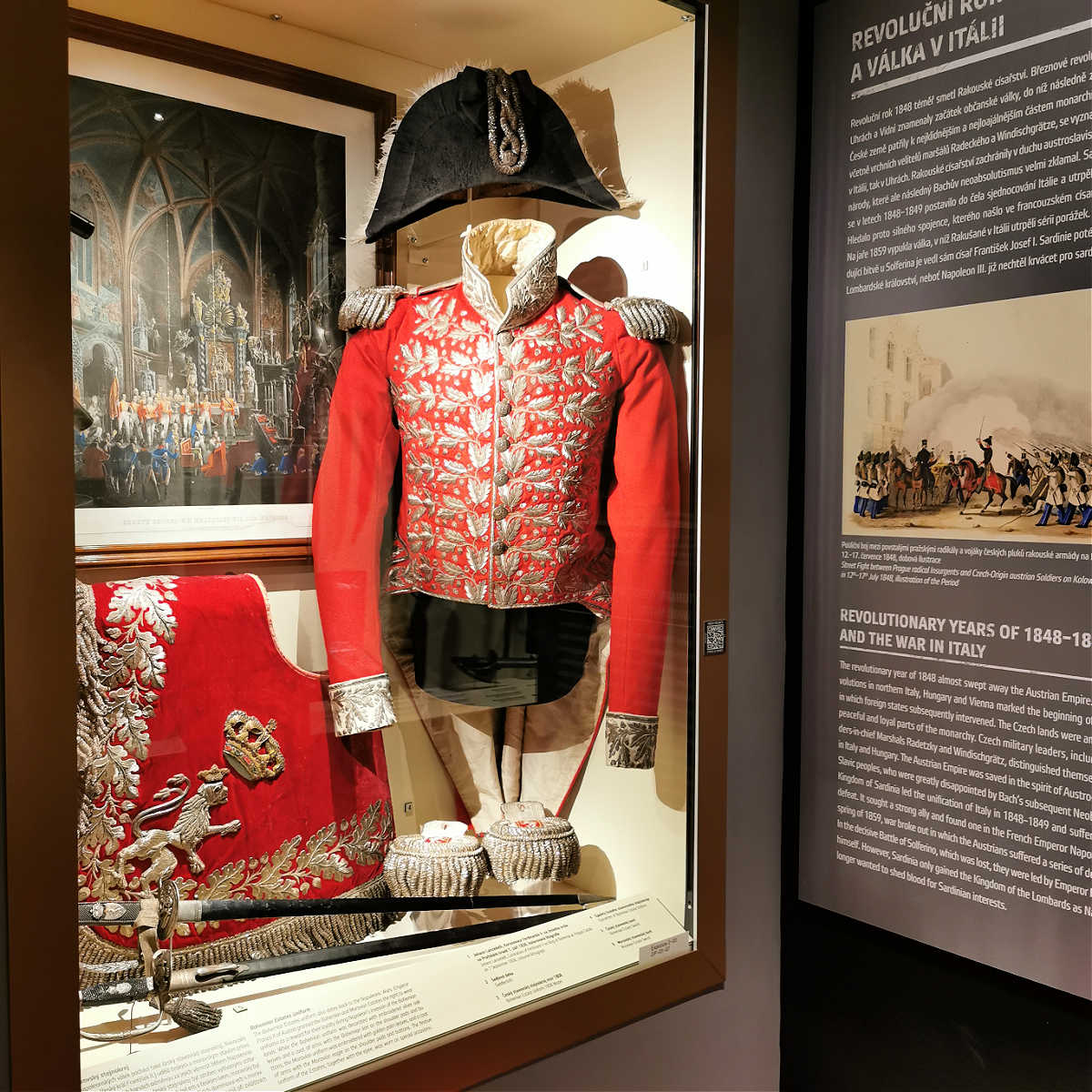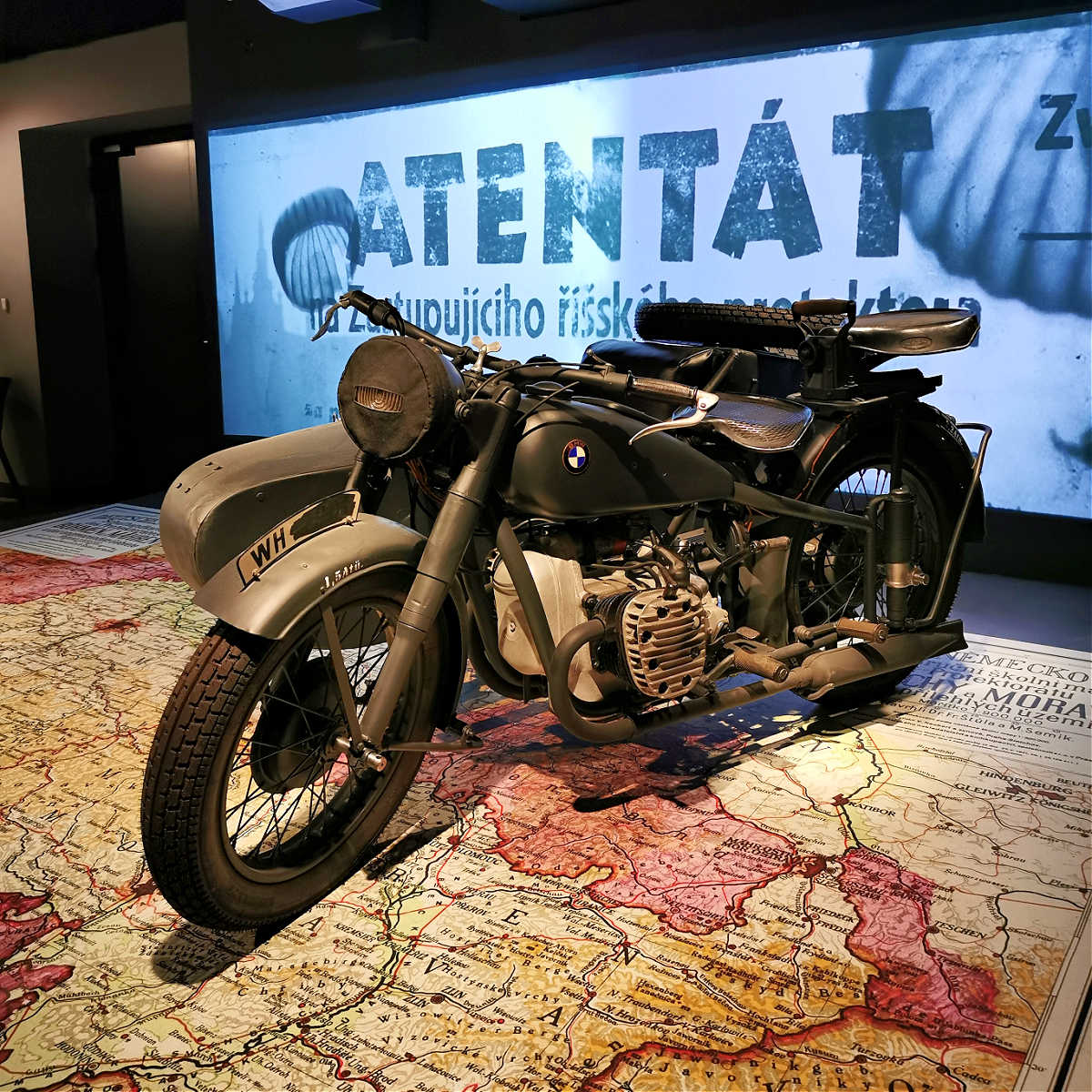Army Museum Zizkov in Prague – Complete Visiting Guide for 2025
The complete guide to visiting Army Museum Zizkov in Prague, including what to see inside the museum, opening times and directions on how to get there.
I think, the Army Museum Zizkov is still a little hidden gem, because it’s tucked away from the centre of Prague and because of its theme, it’s not on everyone’s list of attractions to visit. Which is a real shame as I’ve really enjoyed my visit to the museum, including the fabulous views from the cafe balcony!
The Army Museum Žižkov was originally opened to the public in 1932 and reopened in October 2022 after a four years of a complete reconstruction. Inside the museum, you can explore Czech military history from its beginnings to the present day.
The exhibition area covers an impressive 5,000 square metres on four floors, with over 7,000 exhibits displayed in nearly 300 display cabinets and there are plenty of interactive displays too.
Apart from the military weapons, the Army Museum also displays a range of period uniforms, flags and personal mementoes of Czechoslovak presidents and leading figures of the Czech army. Yes, there is a lot to see!

Is Army museum worth visiting?
Yes, the Army Museum is definitely worth visiting! The museum is really well put together, especially now that it has been completely refurbished and all exhibitions re-done. Everything is done in very engaging way, with lots of different displays, mock ups of scenes and even cars, that soldiers used.
It is a museum about war, especially about World War I and II, so it might not be to everyone’s cup of tea, but I think it’s a great museum to visit if you like history.
I wasn’t particularly keen on visiting, but I have to say, that I have enjoyed learning about how the Czech army has changed over the years and in the end I stayed for longer than I thought I would. My great-grandfather was a Legionnaire and was fighting on the Italian Front during the First World War, so I was particularly interested in seeing exhibitions from that period.
The best bit about the Army Museum is that, it’s free to get in all year round! So if you want to see just one particular exhibition or you just want to visit the cafe, you can totally do that!
I should also mention, that all exhibits have Czech and English descriptions and the English version is really well done.
MORE MUSEUMS IN PRAGUE
My local tip:
The museum has a lovely cafe a the top floor with an outdoor terrace, where you can see the historic centre of Prague, Prague Castle and also the Zizkov Television Tower with giant babies – statues by David Cerny. If you are a bit of a train fan, like me, you can also watch all the trains departing and arriving at the Main Train Station. The cafe is open at the same time as the museum.
The area around the museum is also worth exploring – Zizkov District is full of hidden squares, historic buildings and laid-back cafe places. You can also visit one of the best farmer’s markets in Prague at Jiriho z Podebrad Square and taste the locally produced food.

How long do you need for your visit?
To see the whole museum, you would need at least half a day, as the exhibitions are so detailed and also interesting, so you don’t really want to skip anything.
If you are short of time, say you have only 1 hr, I’d suggest that you decide which history period you are most interested and just go to see that. The staff have a particular way of directing you through the museum (you start on the top floor), because they don’t want you to miss anything, so you might need to either fast track through some exhibits or just tell them you don’t want to start from the beginning.

Practical Information for visiting Army Museum Zizkov in Prague
Location: U Pamatniku 2, Prague 3, Zizkov
The Army Museum is under Zizkov Vitkov Hill where you can also find the warrior Jan Zizka riding on a horse statue that’s visible from most parts of Prague and the Vitkov National Memorial behind the statue.
Opening Times
All year round – Tuesday – Sunday, 10 am – 6 pm (closed on Mondays)
Entry Fee
Admission is free year-round
How to get there:
My favourite way to get to the museum is to walk from Hlavni Nadrazi following the old dismantled railway track, which is now a walking path. The quickest way is to take the path to the left towards the Ponec Theatre. You should be able to see the museum from the main path, so that you know when to take the left turn.
If you carry on on the dismantled railway path, you’ll end up going right next to the museum from the back. There should be a side entrance open to the museum, but if not, you will need to either climb up the hill (and down again) or go down to Husitska Ulice and then walk back to the museum.
Metro: Hlavni Nadrazi underground or the train station is probably the closest one and then about 2-25 minutes walk.
Trams: The nearest tram stop is “Viktoria Žižkov” with tram lines 9 and 26. After that it’s about 10 minutes walk.
Bus: From the outside the Florenc Main Bus stop – at the underground metro station Florenc (lines C a B) take bus numbers 133, 175 or 207 and get off at the stop U Památníku. You can also take bus number 175 to the same stop from the underground stop Flora on line A.

What’s new following the museum renovations
The museum was completely reconstructed between 2018 and 2022 and made changes to the way the exhibitions are displayed and the building used.
For example, the museum now has a new entrance that is under the original atrium. The reception area has a glass ceiling and you can access the exhibitions or take an elevator to the café from there.
Access to the museum is also possible from the bike path at the rear of the building (this is the dismantled railway path).
All the exhibitions were completely re-done with new Czech and English description boards. The exhibitions will take you through the Czech army history from the 6th to the 21st century. There is also ceiling decoration painted in Czech national colours on the first floor, which has been completely restored and can now be finally seen by all visitors.

What can you see inside the Army Museum Zizkov
From the beginnings of settlement by the Slavic people up to 1740
This part of the exhibition includes valuable items from the medieval period, as well as a unique Roman sword, a three-barrel musket with a matchlock from around 1500.
There is also a display area with a scene showing the Battle of Crécy in1346, in which the Czech King John of Bohemia fell, the Hussite wars at the beginning of the 15th century, and the Thirty Years’ War period (1618–1648).

The historic period from 1740 to 1914
The highlight of this part of the exhibition is a wooden pharmacy wagon from the second half of the 18th century, showing a scene of treating a wounded person.
You can also find out more about the Napoleonic Wars (1803-1815) and the Austro-Prussian War of 1866. One of the most beautiful exhibits is the so-called treasury, which has the most valuable examples of handheld firearms from the 16th century to 1914. Seriously, it’s like walking into a jewellery vault at the bank!

World War I (1914-1918) and the establishment of Czechoslovakia (1918)
The wartime sections are dominated by wooden freight railway cars, symbolizing the era when trains transported soldiers to the front. You will walk through an intricately winding and extensive frontline trench, see cannons, a naval torpedo, and a section dedicated to chemical warfare.
The period between the wars 1918-1938
This section focuses on the newly independent Czechoslovak Republic, its military units, military training especially in the second half of the 1930s, and the idea of a democratic state. It also has information about the production of weapons from Czechoslovak industrial factories. Don’t miss my favourite exhibit from this part – the perfume bottles in the shape of an army tank (see my photo below). You couldn’t make it up if you tried!
I found particularly interesting the different personal belongings of key state figures, such as Edvard Beneš, Generals Alois Eliáš, Stanislav Čeček, and Rudolf Medek. I was also able to match my great-grandfather’s medals to the medals and a collection of orders including the Order of the White Lion displayed here.
The final part of this exhibition shows the 1938 mobilization, including an accurate model of a heavy military border fortification (the shooting section of a concrete bunker with a cannon).

World War II and the Communist takeover 1939-1948
The section opens with a metal border post that was removed from the borders after the Munich Agreement in the autumn of 1938.
The exhibition shows the battles of World War II on all fronts where Czechoslovak soldiers were present, including a wide range of weapons, uniforms, personal items, documents, records, photographs, and more.
The resistance in the Protectorate and the assassination of Reinhard Heydrich (1942) are also included. Exhibited items commemorate Jozef Gabčík and Jan Kubiš, as well as everything related to the battles in the Church of Sts. Cyril and Methodius on Resslova Street and the Operation Anthropoid .
Another section is dedicated to the victims of the Holocaust, honouring the memory of Czechoslovak Jews who perished in concentration camps. The final part focuses on the period 1945-1948, when Czechoslovakia was being restored, but at the same time, communist power was on the rise.

The Communism Period 1948-1989 and the current times
This section focuses on the army of the People’s Democratic Czechoslovakia, which was part of the Warsaw Pact from 1955, the bipolarity of the world during the Cold War, and the Iron Curtain.
The separation of the West from the East during the years 1948-1989 is illustrated by a model of the border area. It includes portraits of communist leaders and numerous items illustrating the socialist armies and their gradual decline during the period of normalization.
Following this is an extensive final segment – the development of the military forces of the Czech Republic after 1993. It shows the Czech army’s path to NATO, including foreign operations of Czech soldiers, such as the nearly twenty-year deployment of Czech units in Afghanistan from the beginning of the 21st century until 2021. The entire exhibition at the Army Museum Žižkov concludes with a sign from Czech embassy in Kabul, which was acquired by the Military History Institute Prague in 2021.
This blog post was originally written on 8 October 2024 and last updated on 8 October 2024






